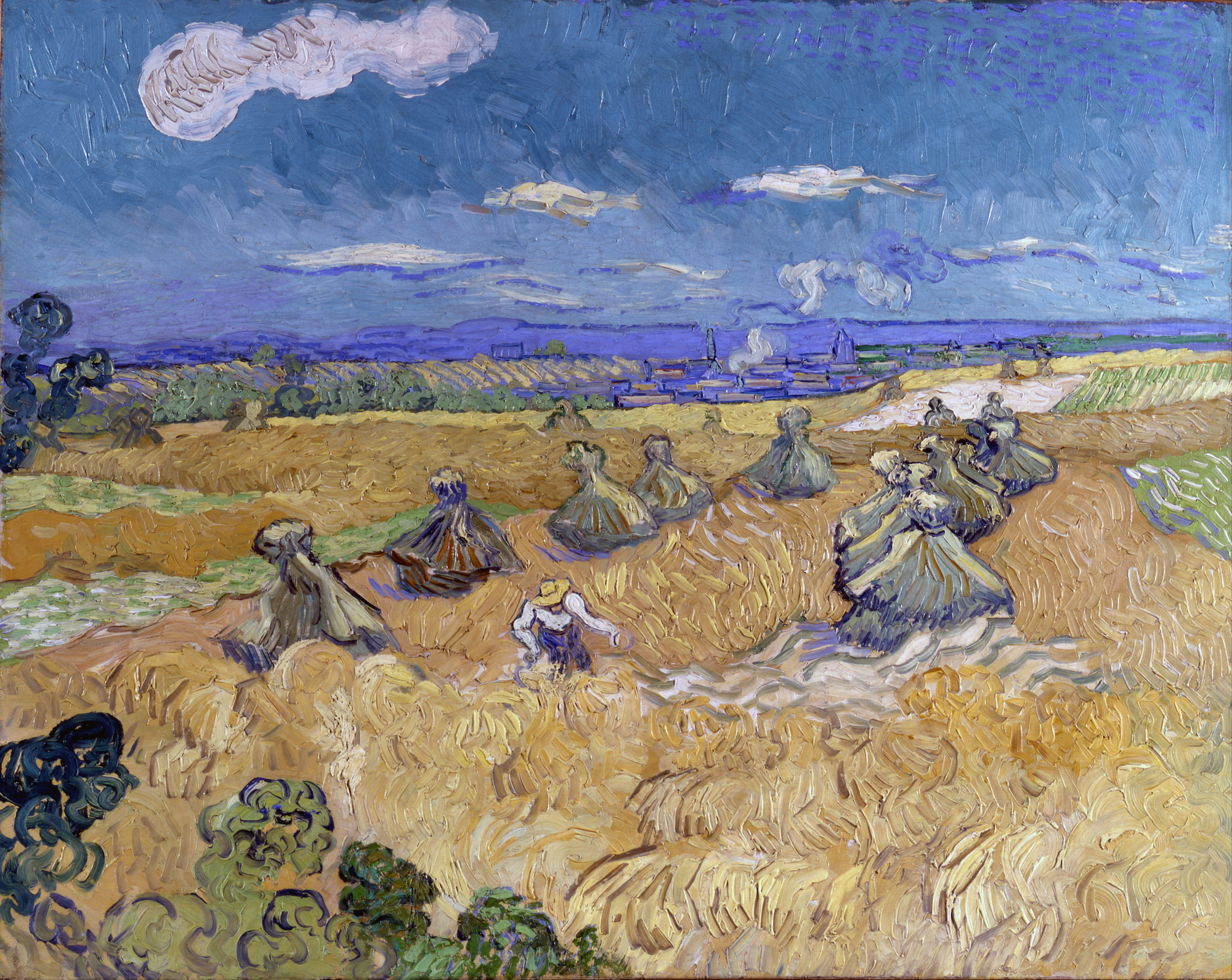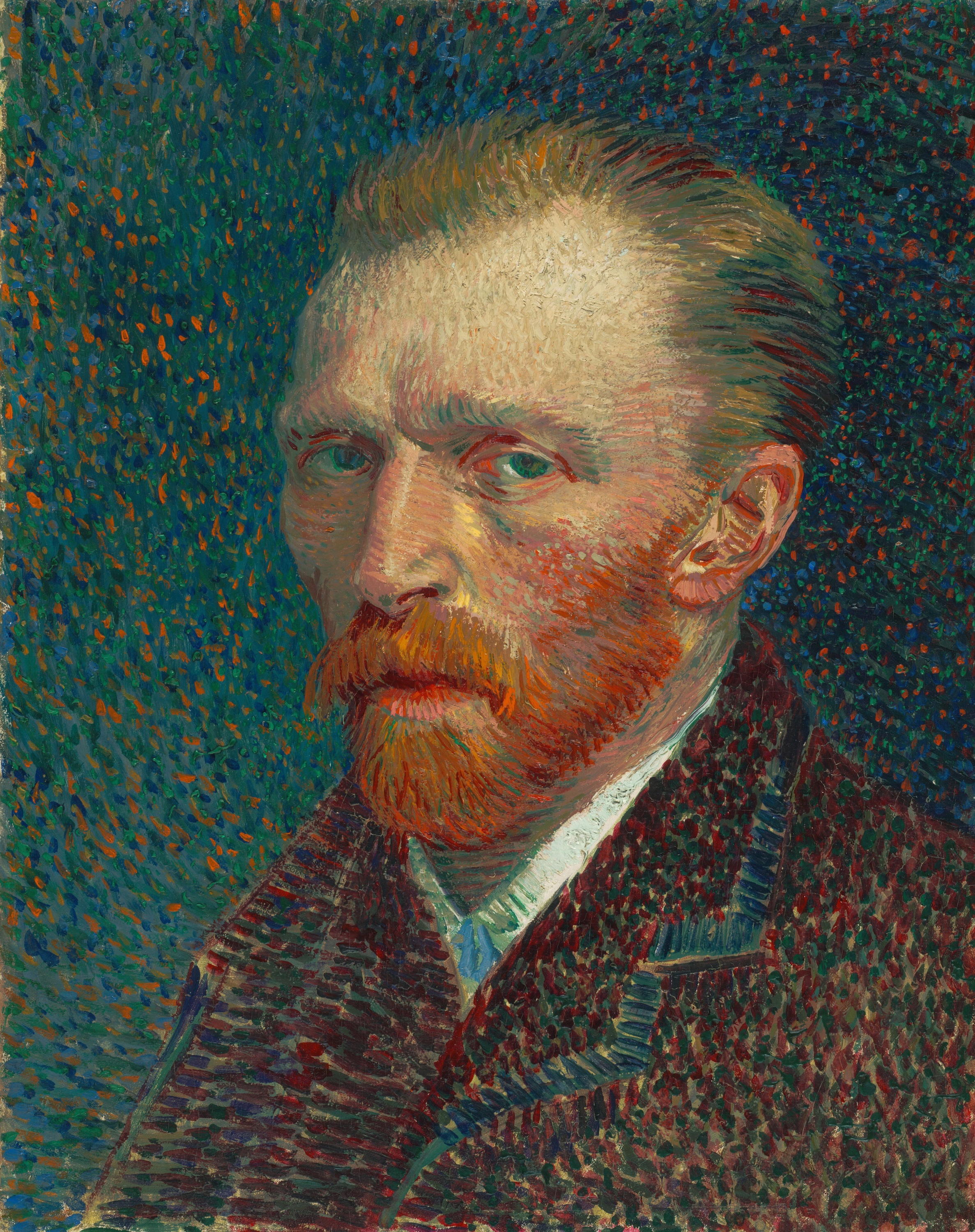Vincent van Gogh was fascinated by the vast fields of wheat that stretched above Auvers-sur-Oise, the town north of Paris where he spent the final two months of his life. He painted many views of these fields in his last days, including this landscape with a reaper cutting the golden grain while the stacked sheaves recede toward a village and distant blue hills. He painted out-of-doors in direct response to the landscape, as many Impressionists did. However, in van Gogh's art, the color is bolder and less nuanced; the brushstrokes heavier, more regular, and more distinct; the forms and spaces more freely distorted; the rhythms coursing and emphatic. He sought to express what was for him the essential character of the landscape, but also to "disentangle," as he once put it, what he understood and felt of nature's "expression and soul" — to evoke "a more exalting and consoling nature than a single brief glance at reality … can let us perceive." Though inspired by the observation of his immediate surroundings, van Gogh also saw symbolic meanings in the wheat fields and in the figure of the reaper; and sublime, almost religious, emotions. Discussing an earlier painting of a reaper, he explained in a letter to his brother Theo: "I see in him the image of death, in the sense that humanity might be the wheat he is reaping ... But there's nothing sad in this death, it goes its way in broad daylight with a sun flooding everything with a light of pure gold… it is an image of death as the great book of nature speaks of it…."




Wheat Fields with Reaper, Auvers
oil on canvas • 73.6 x 93 cm
 Vincent van Gogh
Vincent van Gogh